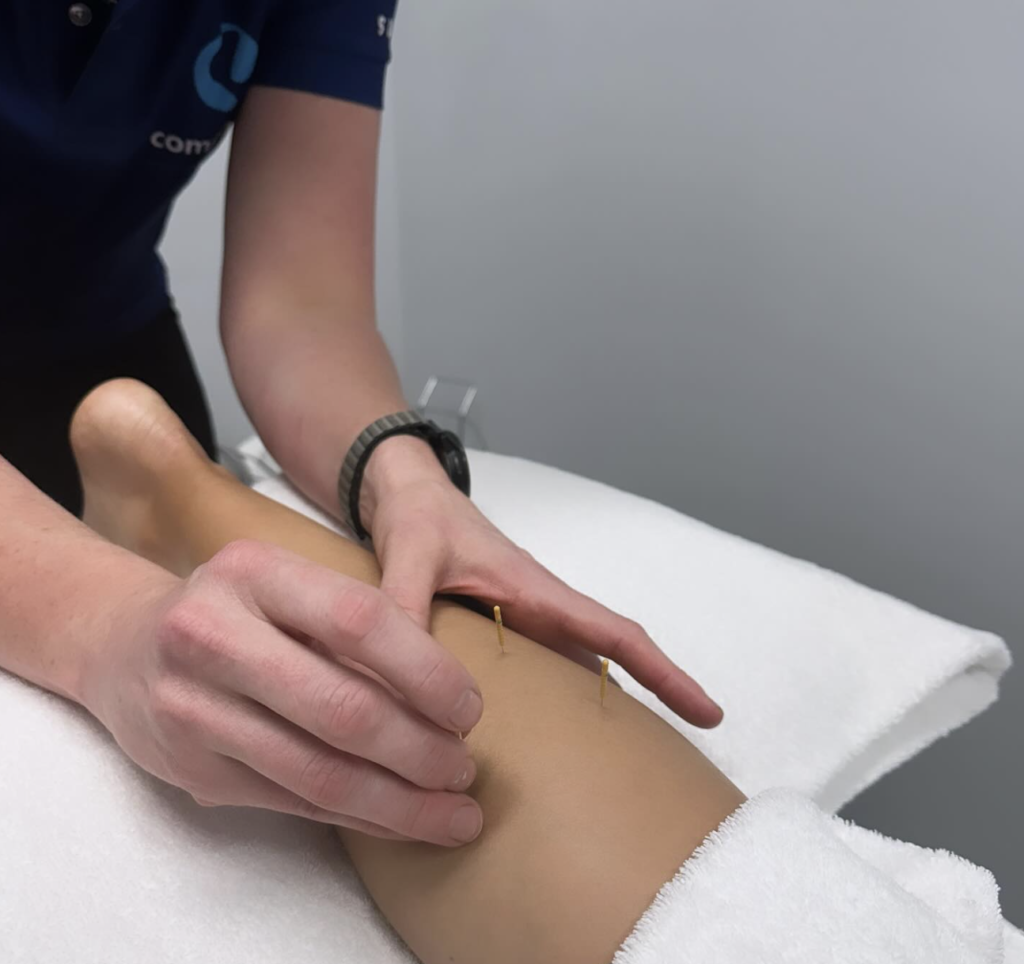
For some people, these active approaches can be supported by adjunctive treatments such as shockwave, manual therapy or dry needling to help reduce your pain and support your active rehabilitation plan. This blog provides a brief overview of dry needling to help you understand how and when this treatment option might be useful for you.
Dry Needling is a treatment method where fine single use needles are inserted into altered or dysfunctional tissue to improve or restore function1. Needles are usually inserted into taught bands of muscle or connective tissue that may be contributing to your pain and limiting free and relaxed movement.
Depending on the specific techniques used, this method can assist in whole body and local pain reduction, decrease sensitivity of trigger points, and help reduce muscular tightness and spasm. The name ‘dry needling’ is largely used to distinguish it from other types of needling that involve injections of ‘wet’ substances into an affected area.
Is Dry Needling the same as Acupuncture?
Although there are some clear similarities, it is not the same. DN uses a western medical and anatomical approach to guide needle placements with the aim of restoring normal tissue function and reducing pain. In comparison, acupuncture uses traditional eastern philosophy that involves the utilisation of meridian or points based on an East Asian Medicine diagnosis and theories to treat local and systemic conditions.
How does Dry Needling work?
Dry Needling may help to reduce pain, improve joint mobility, and reduce unwanted tissue tension and trigger points that may be slowing your rehabilitation and return to full activities. Although the precise mechanisms are complex and not fully known, dry needling is thought to decrease pain via local and central nervous system responses, as well as promote local physiological and chemical changes to restore homeostasis (normal balance) in the muscle tissue.

Is Dry Needling painful?
There is sometimes a small scratch as the needle penetrates the skin, but with skilled practitioners this is usually very minor. Depending on the specific needling methods used, some people experience some local and referred sensitivity and replication of their usual pain, but this should always remain tolerable. Your practitioner will guide you through the treatment to reduce any discomfort.
At Complete, Physio Exercise Performance in Richmond all of our clinical practitioners are a minimum of degree qualified, with excellent anatomical knowledge to ensure all appropriate precautions are taken during treatment.
What are the risks and side effects?
Dry needling is considered a safe treatment approach2, but like any invasive procedure, there are risks. Most adverse events are mild in nature, with serious adverse events considered to be very rare3. Mild adverse events can include minor bleeding or bruising, or an increase in discomfort during and immediately after treatment. These are likely to resolve within 1-2 days. Serious adverse events can include the following:
- Minor to moderate dizziness during or after treatment
- Fainting and or convulsions (Vasovagal syncope)
- Infection
- Damage to viscera – including lungs and other organ tissues
- Post-treatment drowsiness
- Localised swelling/burning/aching pain
Precautions will be taken by your practitioner to reduce the chances of any treatment side effects.
References
- Australian Society of Acupuncture Physiotherapists (ASAP, 2013) Guidelines for safe acupuncture and dry needling practice.
- Brady, S., McEvoy, J., Dommerholt, J., & Doody, C. (2014). Adverse events following trigger point dry needling: a prospective survey of chartered physiotherapists. The Journal of Manual & Manipulative Therapy, 22(3), 134–140. http://doi.org/10.1179/2042618613Y.0000000044
- Dry Needling Adverse Events (2015) Physiotherapy Alberta https://www.physiotherapyalberta.ca/files/faq_dry_needling_adverse_events.pdf
Find Us
Book a physiotherapy consult at our Richmond clinic by calling Reception on (03) 9882 2020.


